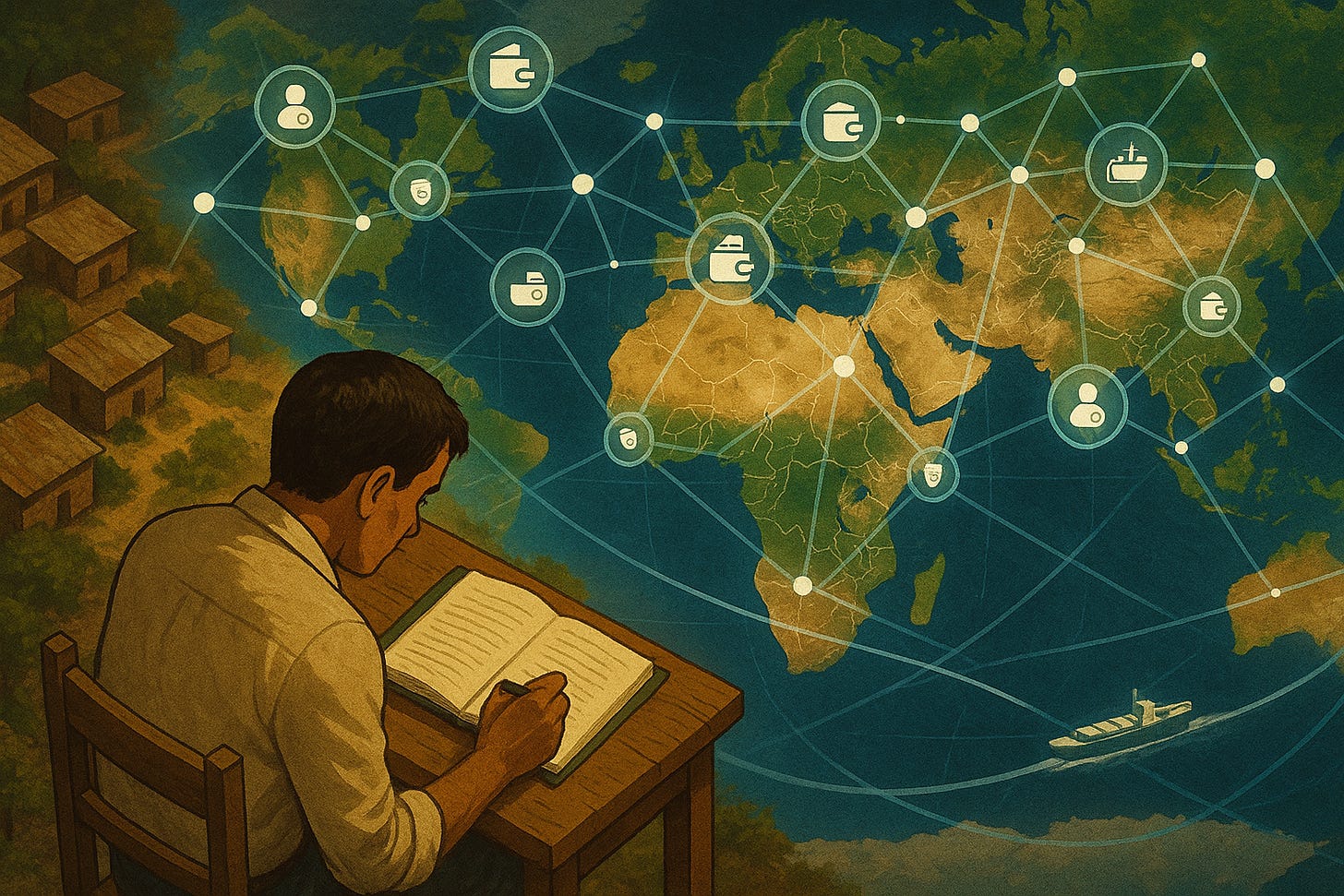Beyond the Field: Why Counter-Terror Finance Needs a Systems Mindset
Why Field Interviews Alone Miss the Financial Engine of Modern Terrorism
For years, fieldwork has been treated as a gold standard in counter-terror finance (CTF) analysis. Interviews with local officials, fixers, and community leaders offer texture, human nuance, and tactical-level detail. But in today’s globalized threat ecosystem—where crypto flows faster than trucks, and commodities move under flags of convenience—fieldwork isn’t enough.
In fact, when unaccompanied by systems-level insight, it can obscure more than it reveals.
The limits of truth on the ground
There’s no question that field research has value. It surfaces:
Local sentiment
Tactical extortion patterns
Recruitment narratives
Cash movement at the community level
But it also has blind spots. Field intelligence is often:
Anecdotal
Narrow in scope
Filtered through locals with no view of the broader financial architecture
Without integration into a systems framework, field reporting risks reinforcing assumptions instead of revealing structural vulnerabilities.
What Fieldwork Misses: The Capital Shift
The real difference between a local extortion ring and a cross-border threat finance network isn’t scale. It’s mobility.
Local revenue sources like kidnapping or informal taxation:
Yield modest sums in unstable currencies
Depend on political control of terrain
Can sustain operations—but rarely build long-term resilience
Remember: terrorist groups usually exist in low-security environments with limited local economies. There’s not much cash to go around to begin with.
Commodity-linked and cross-border flows, on the other hand include:
Gold smuggling: Jama’at Nusrat ul-Islam wa al-Muslimin (JNIM) generates millions of dollars taxing or directly controlling artisanal mining operations in Mali, Burkina Faso, and Niger. Gold is then funneled through informal traders to hubs like Dubai, where it’s integrated into global supply chains—often with no trace of its militant origin. These flows are highly liquid, hard to trace, and rarely captured in field interviews focused on ideology or local grievances.
Rare earth and mineral exports: In the eastern DRC, the M23 rebel group and affiliated smuggling networks extract value from coltan, gold, and rare earth elements—generating tens of millions of dollars annually through illicit trade. These materials are moved via informal supply chains into Rwanda and Uganda, then sold into global markets – local sources provide little insight into this immense cashflow.
Rare timber smuggling: Militant groups like JNIM in West Africa and al-Shabab in Mozambique exploit rosewood, pau ferro, and other high-value hardwoods, generating tens of millions annually through illicit logging and taxation of supply chains. These rare timbers are trafficked through porous borders into Benin, Togo, and Tanzania, then exported—often mislabeled—to buyers in China and Southeast Asia. Revenues are laundered through regional intermediaries, cross-border trade hubs, and increasingly, crypto-based brokers, making them largely invisible to ground-level field assessments focused on local conflict dynamics.
These assets:
Are converted into USD, RMB, or stablecoins (esp. USDT)
Plug into global shadow logistics and informal banking networks (maybe even those associated with China, Iran and Russia)
Enable actors to store, move, and reinvest capital across borders and jurisdictions—far beyond the reach of traditional enforcement
Where’s the focus?
I’ve heard it suggested that considering systemic funding flows like commodity smuggling reflects a “top-down” approach—implying it might miss local nuance.
But if these flows account for the majority of many groups’ funding—and local sources don’t perceive them—is it really out of touch to focus on them?
These revenue streams are usually invisible to field researchers, yet they form the backbone of modern threat finance. Shouldn’t they be the starting point, not the afterthought?
The Growing Gap
As the global financial system becomes more fragmented, threat actors adapt:
Hawala networks now settle in stablecoins
Oil shipments move through offshore shell firms
Cartelized logistics hubs double as laundering nodes
Yet much of the field-based CTF reporting continues to focus on what is visible and narratively accessible—missing the architecture that actually sustains and expands these networks.
This isn’t a failure of fieldwork. It’s a failure to connect it to the bigger picture.
Toward a Smarter Model
The most effective CTF analysis doesn’t discard field insight—it realigns it.
We need a hybrid model that:
Begins with capital movement and laundering pathways
Uses field reporting to validate or refine structural hypotheses
Integrates blockchain forensics, trade flow anomalies, and enforcement data
Recognizes that the financial health of a network often matters more than its ideological claims
The Bottom Line
Fieldwork remains essential—but it’s no longer sufficient.
The future of counter-terror finance lies in systems-first, field-informed analysis. If we want to disrupt how threat actors survive, expand, and adapt, we must follow the money—especially when it doesn’t stay in one place.
Want more insight like this?
Subscribe to Between the Lines for original research on threat finance, geopolitical gray zones, and the systems that shape modern conflict. Paid subscribers get access to premium briefings, typology breakdowns, and early access to case studies used by compliance professionals, investigators, and analysts across sectors.
Upgrade your subscription to support independent intelligence work—and get deeper visibility into the networks traditional fieldwork often misses.




You just opened up a whole new world I knew nothing about.